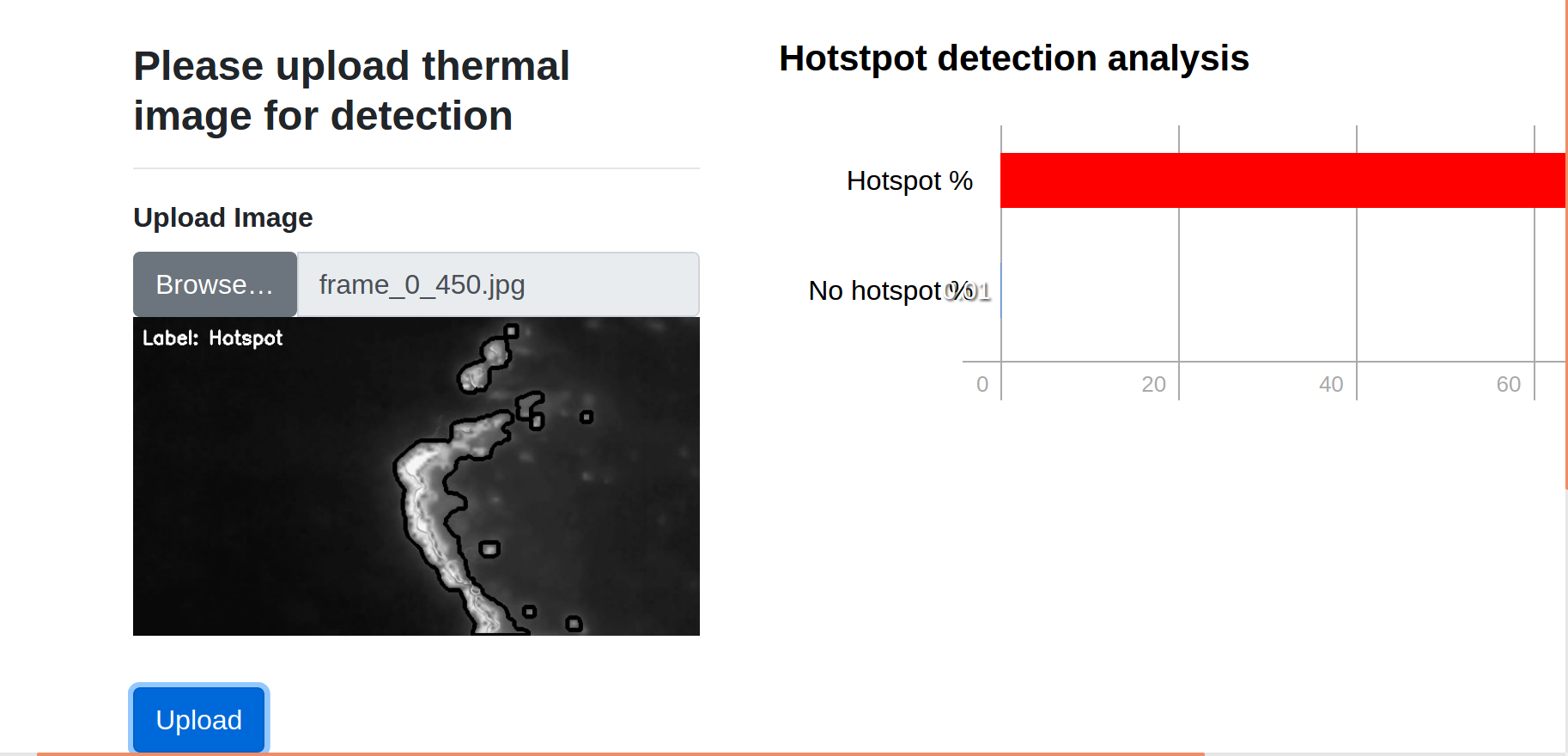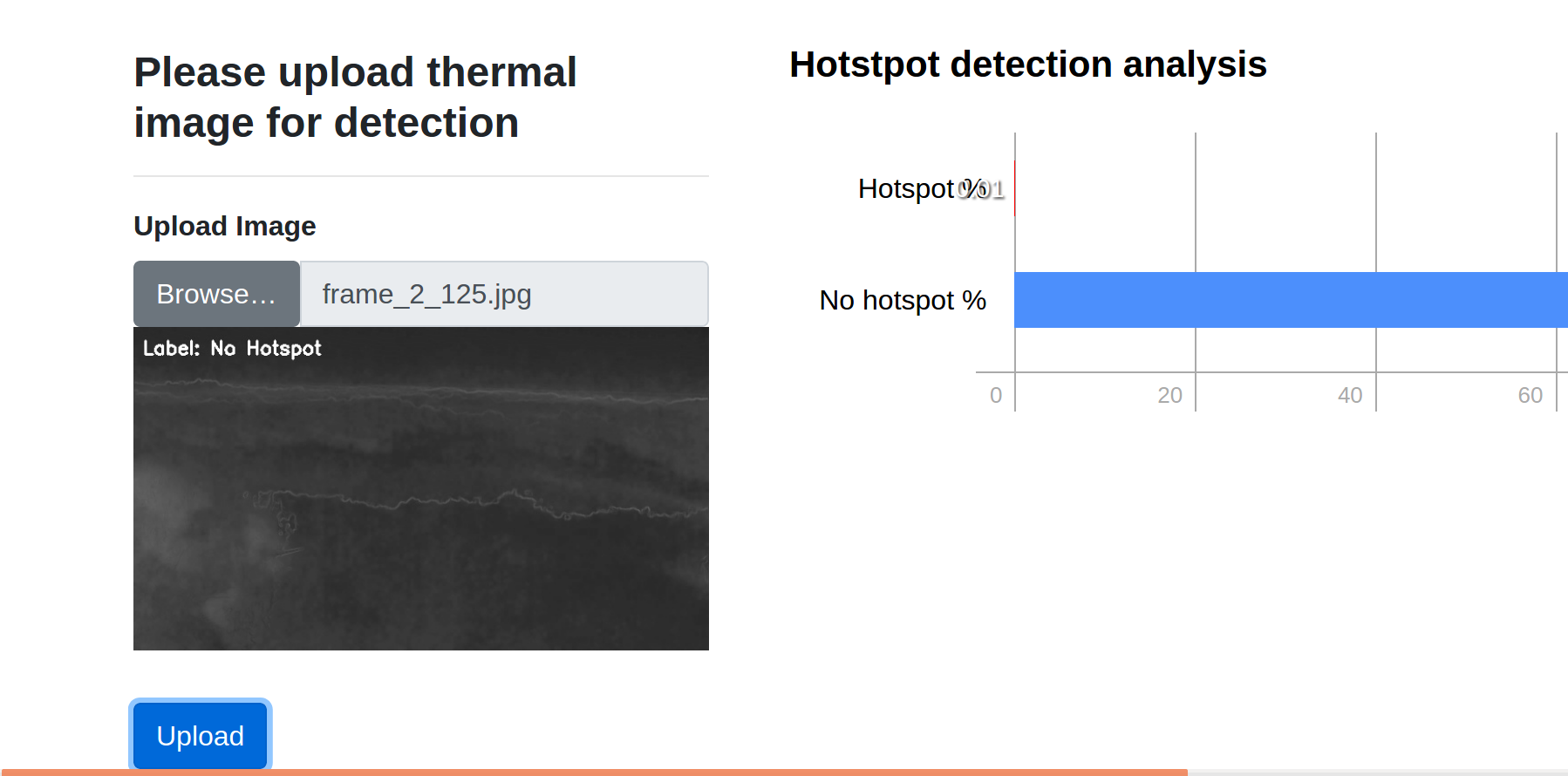A CNN network trained for detecting hotspot in thermal imagery via transfer learning.
The binary detection method determines whether thermal images contains hotspots or not.
A pre trained VGG16 keras model is used to extract arbitary feature vectors that globally describe the image. Based on the extracted features, a Logistic Regression classifier is trained on the features for image classification purposes. For images that contain hotspot, the hotspot regions are localised using Otsus's adaptive thresholding techniques. See link below for demonstration
http://hotspotdl.herokuapp.com/
apt-get install -y libsm6 libxext6 libxrender-devsudo apt-get install -y libgirepository1.0-dev build-essential \
libbz2-dev libreadline-dev libssl-dev zlib1g-dev libsqlite3-dev wget \
curl llvm libncurses5-dev libncursesw5-dev xz-utils tk-dev libcairo2-devSoftware has been developed in Python. Install dependencies using pip
pip install -r requirements.txtBuild docker image
docker build -t <name of image > .Run docker container
docker run -it -e PORT=5000 -e DATABASE_URL=sqlite:///tmp/tmp.sqlite -p 5000:5000 <name of image > python feature_extraction.py [-h] -i IMAGES -o OUTPUT
optional arguments:
-h --help show this help message and exit
-i IMAGES, --images IMAGES path to input images
-o OUTPUT, --output OUTPATH path to output hdf5 filepython feature_extraction.py -i ../training_test_data/training/ -o features_training.hdf5
python feature_extraction.py -i ../training_test_data/testing/ -o features_testing.hdf5
Once the features have been extracted, a Logistric Regression model can be trained on the extracted features
python classifier.py [-h] -train TRAIN_HDF5 -test TEST_HDF5
optional arguments:
-h --help show this help message and exit
-train TRAIN_HDF5, --train_hdf5 TRAIN_HDF5 path to trained hdf5 file
-test TEST_HDF5, --test TEST_HDF5 path to test hdf5 filepython classifier.py -train features_training.hdf5 -test features.hdf5
Output from the python script would be a model.cpickle file
Run the following commands to create your apps database tables and perform initial migration
flask db init
flask db migrate
flask db upgradeTo run the web application use:
python app.pyA web server would be spawend and one can type in the browser localhost:5000 and you should see:


